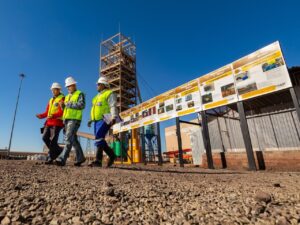[imagesource: Pixabay]
You don’t need news stories to tell you that all is not well at Eskom.
We’re currently on our longest load shedding streak to date with outages every day since September 8.
Can we make a full month? Eskom CEO André de Ruyter has stated that power cuts should start easing within the next 10 days when big generation units are expected to come back online.
By then, we’ll be well into month number two.
De Ruyter has his hands full trying to turn things around, on top of finding a sophisticated bugging device in his car last Friday.
Insiders who spoke with Daily Investor recently painted a worrying picture of setback after setback. The sources include current and former executives who say the power utility is not honest with the public about their problems and what is needed to resolve them.
The following issues were put forward as prime drivers of Eskom’s inability to prevent load shedding:
Political interference and a lack of political will to fix Eskom are at the root of the problems.
Poor employees and a lack of skills at all levels are behind most of the breakdowns and poor maintenance at Eskom’s power plants.
Eskom defunded its engineering internship programmes which were needed to ensure junior technical staff received the necessary training to be productive. New employees are thrown in at the deep end, which causes problems.
When employees are found to be falling well short of expectations, or guilty of serious misconduct, they’re often put on paid suspension.
It’s incredible how many government positions are filled by employees on suspension with full pay.
Often, the interim solution is to hire somebody to fill the vacancy, meaning two salaries are paid (from taxpayer money) at the same time.
A culture of unchecked criminality, likened to the ‘mafia’ recently by billionaire Rob Hersov, has also led to a situation where employees with know-how and skills opt to work elsewhere.
Eskom is cutting the budget for important projects, including maintenance and refurbishments, which will worsen load-shedding.
Corrupt networks continue to exist at Eskom, with politically connected employees facilitating the corruption.
Eskom is forced to use suppliers that struggle to deliver equipment for maintenance and upkeep at power stations.
When de Ruyter took over and started going through expenditures from various departments, criminal overspending was found.
For example, three suppliers were paid a total of R3 million to supply Eskom with knee guards at prices ranging up to R80 000 for a set. Prices across various popular online retailers ranged from R110 up to roughly R400.
De Ruyter also found orders where Eskom would have paid R238 000 for a wooden mop, R28 for a roll of single-ply toilet paper, and R56 for a bottle of two-litre milk.
Components used at the Matla and Kendal power stations were routinely marked up well beyond market price, with one part that should have cost roughly R42 000 being bought for in excess of R365 000.
Connie Mulder, the head of Solidarity’s research institute, told a familiar tale:
“The future of energy in South Africa lies in decentralized, privatized generation and distribution,” he said. “The single biggest reason Eskom is in this dire position is government interference.”

…This malaise led to the phenomenon of state capture, where Eskom was not only rendered ineffective but actively looted.
Eskom’s struggles have led to a proactive response by The City of Cape Town, which is exploring a number of options to reduce reliance on that power grid.
Meanwhile, de Ruyter said all short-term solutions are being considered. This via Moneyweb:
“We are doing everything possible to add megawatts to the grid… We have started buying power from Zambia, and we are looking at Mozambique and the private sector to add megawatts.”
The private sector has a total of 6 000 megawatts of new renewable projects in the pipeline, he said..
Realistically, we’re looking at another 18 to 24 months before that additional capacity is online, according to the CEO.
In case you were on the fence about investing in an inverter or solar power, that timeline should be telling.
The Kusile and Medupi power stations were first announced in 2007 and were slated to be done by 2015. That project is still ongoing and in excess of R300 billion over budget.
[sources:dailyinvestor&moneyweb]





